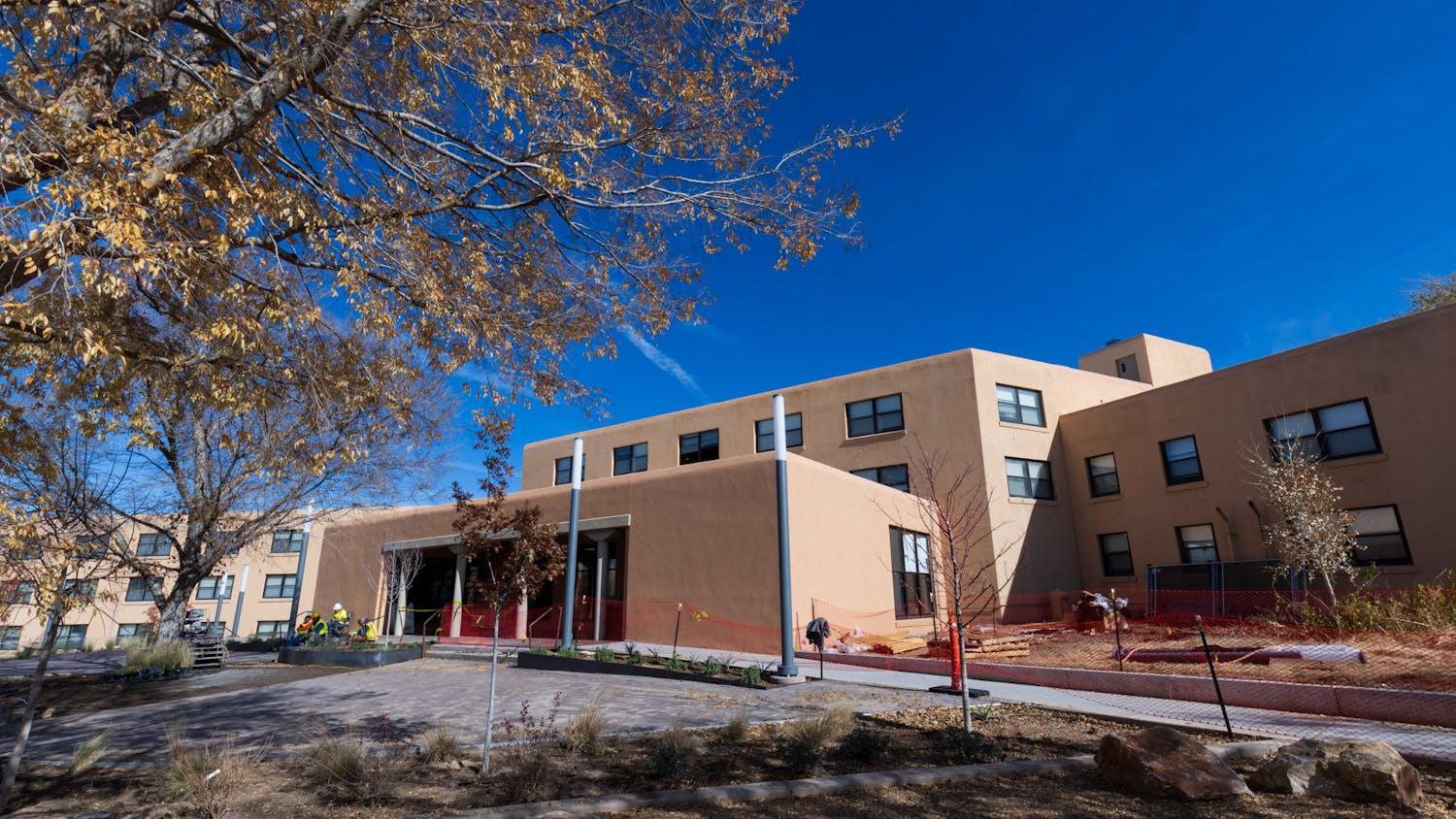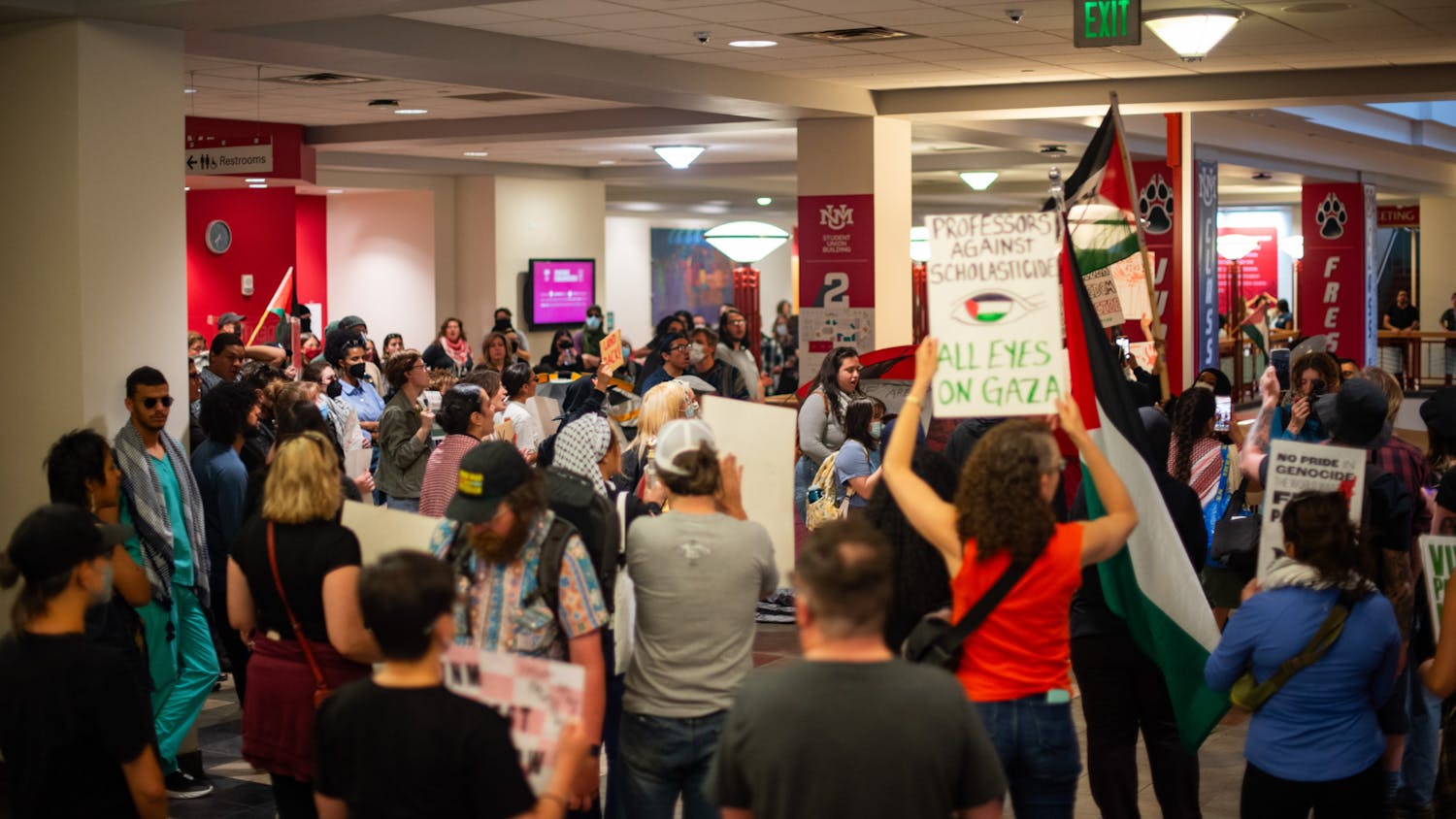There is a specter haunting student government elections — the specter of low voter turnout.
A president, vice president and 10 senators will be voted into the ASUNM government on April 14. And if history is any indication, voters will represent about 7 percent of the undergraduate population.
Last spring, ASUNM elections brought 1,433 UNM students to the polls, about 7.5 percent.
“More than (17,000) students don’t really vote or don’t really know about it,” said Sen. Lazaro Cardenas, candidate for president. “(The solution) is basically wiping out the ignorance, and that is the hard thing to do. I guess I would research what other institutions had done and go from there.”
Low voter turnout is not just UNM’s problem. The Daily Lobo looked at voter turnout in the spring 2009 elections in five other peer institutions or Mountain West Conference counterparts — the University of Colorado (3.2 percent), the University of Oklahoma (11.49 percent), San Diego State University (15.5 percent) and the University of Kentucky (19 percent).
All other peer institutions and conference members were unable to provide data.
With one exception, all the schools recorded less than 20 percent of students showing up to the polls.
David Conway, who is running for ASUNM president, said it is hard to get nontraditional and commuter students active in the UNM community.
“Reaching out to them is more difficult, but we absolutely try to get them more involved,” Conway said. “I try to go out and talk to the students that are not normally going to vote.”
Conway said that the Student Voice for Student Fees movement showed that students will get involved if there is a cause they care about.
More than 350 students signed a petition and nearly 40 packed the ASUNM Senate to champion a resolution in support of the three organizations and a Queer Resource Center, which the administration was threatening not to fund.
Still, those signatures represented the voice of less than 3 percent of the total undergraduate student body.
Cardenas said that nothing will change until the student government starts to tackle issues that matter to the entire student body.
“I think, right now, our student government doesn’t hold that much weight from some of the decisions that we have made,” Cardenas said. “We make decisions on their behalf, yet they don’t have a say in it. So, you lose respect in that aspect of it.”
Other institutions’ success at bringing in the votes.
Most schools seem to be in the same boat when it comes to low voter turnout. The Daily Lobo found one exception — TCU.
TCU consistently has nearly 30 percent of students showing up to the polls. In fall 2008, that number shot to 40.15 percent.
Marlon Figueroa, TCU student body president, said those numbers can be attributed to the use of guerilla tactics when it came to getting out the vote.
“In 2008, candidates and campaign staff members were allowed to roam around campus with computers,” Figueroa said in an e-mail. “Students used this to hunt down and force as many students to vote. That allowed for the extra 10 percent we garnered that year.”
Though the tactics worked in terms of increasing voter turnout, it also produced some negative effects.
“That rule was banned after all the controversy it created,” Figueroa said.
Leaving behind the brief stint at pestering students for a vote, TCU has still produced numbers consistently higher than other institutions.
TCU is a private school that houses around 9,000 students, less than half the size of UNM, and that change in culture might be the difference between apathy and activism, said Figueroa.
“TCU is not a commuter school at all in that we are a private institution,” Figueroa said. “Being a private institution gives the administration a lot more flexibility accomplishing TCU’s vision and goals more efficiently whenever the institution wants.”
Get content from The Daily Lobo delivered to your inbox
Even so, TCU’s 30 percent voter turnout totals half of the percentage of eligible voters that traditionally turn out to U.S. presidential elections.
“(Student government) elections are very frustrating, and I don’t want you to think that it’s easy at all for us, even with the whole student population being constantly present on campus,” Figueroa said.
But low voter turnout is not only UNM’s problem. The Daily Lobo looked at voter turnout in the spring 2009 elections in five other peer institutions or Mountain West Conference counterparts — the University of Colorado (3.2 percent), the University of Oklahoma (11.49 percent), San Diego State University (15.5 percent) and the University of Kentucky (19 percent).





